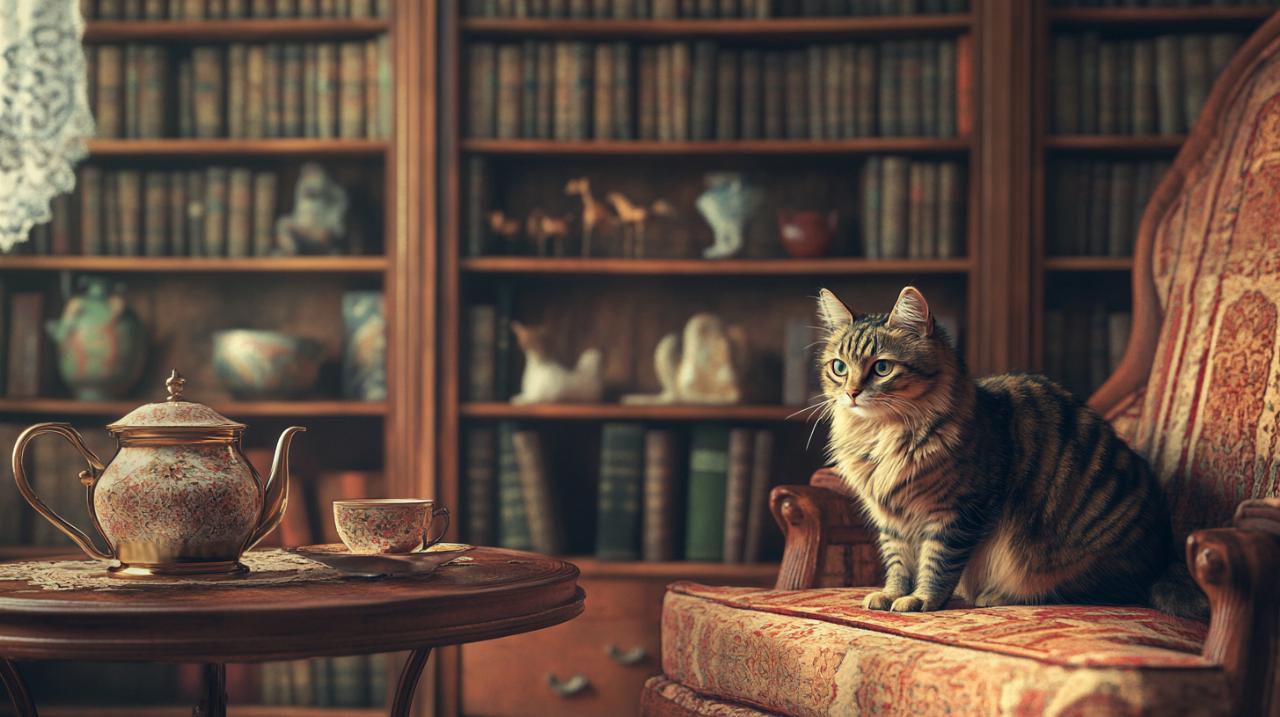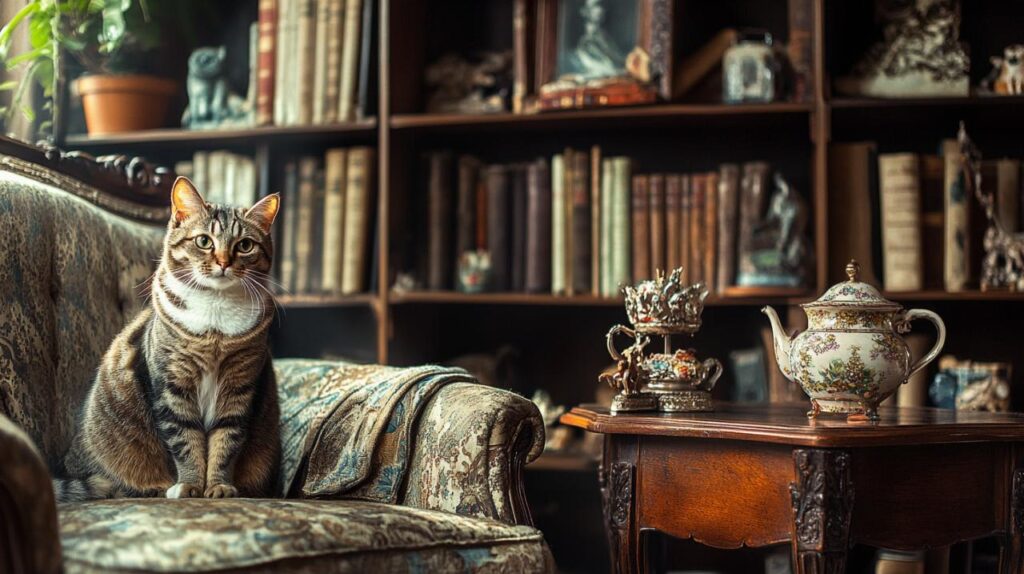The treasures tucked away in attics and cupboards across the country often hold more than sentimental value. From vintage clothing to forgotten timepieces, the items passed down through generations might just be worth a small fortune. Understanding how to recognise genuine worth in family heirlooms requires a blend of keen observation, thorough research, and sometimes a dash of professional insight. Whether it is a childhood toy or a piece of mid-century furniture, unlocking the hidden potential of these items can be both rewarding and surprising.
Examining your antiques: the first steps to discovery
The initial examination of any antique begins with a thorough visual inspection. This is where patience and attention to detail come into play. Every scratch, every faded mark, and every irregularity in colour or texture tells a story about the life of the object. Authentic antiques display wear patterns that are organic and uneven, shaped by years of genuine use rather than artificial distressing. When handling a piece, pay close attention to how the surfaces feel beneath your fingers. A natural patina develops gradually over decades, creating a texture that cannot be replicated by modern manufacturing techniques. The organic nature of ageing wood, metal, or fabric reveals itself in subtle inconsistencies that are the hallmark of true antiquity.
Spotting maker’s marks and signatures
One of the most telling indicators of an item’s origin and authenticity lies in its maker’s marks or signatures. These stamps, engravings, or printed labels often provide crucial information about the manufacturer, the period of production, and even the specific craftsman involved. It is essential to search every surface, including the underside of furniture, the back of picture frames, and the bases of ceramics. Authentic marks typically show signs of wear, such as slight blurring or fading, which is consistent with age. Online databases and reference books dedicated to maker’s marks can be invaluable resources for deciphering unfamiliar symbols or initials. Many digital tools, including smartphone applications, now allow collectors to identify marks with a simple photograph. However, it is worth remembering that counterfeit marks do exist, particularly on high-value items such as designer watches and handbags. A close examination of the quality of the engraving or printing, combined with knowledge of the manufacturer’s history, can help distinguish genuine marks from fakes. For those keen on building a deeper understanding of these identifiers, a visit shopping lab might offer additional resources and community insights into the world of antique marks and authentication techniques.
Assessing condition without causing damage
Condition plays a pivotal role in determining the value of any antique. An item in pristine or near-mint condition will invariably command a higher price than one that has suffered damage or heavy wear. However, the process of assessing condition must be approached with caution to avoid inadvertently reducing the item’s worth. Resist the temptation to clean, polish, or repair anything yourself, as amateur restoration attempts can strip away original finishes, obscure maker’s marks, or introduce modern materials that detract from authenticity. Instead, examine the piece gently, looking for cracks, chips, scratches, or signs of previous repairs. Original hardware, such as screws, hinges, or handles, adds to the value, so check whether any components have been replaced. For textiles and paper items, look for discolouration, tears, or signs of insect damage. Wood should be inspected for splits, warping, or wood worm, while metal items may show tarnishing or corrosion. Ceramics and glass require careful scrutiny for hairline cracks or glaze crazing. In all cases, the key is to document the condition thoroughly without attempting any intervention that might compromise the integrity of the piece.
Research and Authentication: Uncovering the Story Behind Your Treasures
Once the initial examination is complete, the next step is to delve into the history and context of the item. Research transforms a mere object into a narrative, revealing connections to past eras, notable individuals, or significant events. This investigative process not only enriches your understanding but also serves as a critical tool in establishing authenticity and value. The digital age has made this task more accessible, with countless online resources, databases, and communities dedicated to antique identification and valuation. However, effective research requires a methodical approach, combining online searches with traditional reference materials and expert consultations.

Comparing market prices and auction results
Understanding the current market value of an antique involves examining recent sales of similar items. Auction house records, online marketplaces, and specialised antique dealers all provide valuable benchmarks. Websites such as eBay offer a snapshot of what buyers are willing to pay, though it is important to distinguish between asking prices and actual sold prices. Auction results from reputable houses like Mallams auctioneers or major international firms give a more accurate picture of market trends, particularly for higher-value items. When comparing prices, consider factors such as condition, provenance, rarity, and current collector demand. For instance, a Rolex watch with documented provenance recently achieved a sale price approaching thirty thousand pounds, illustrating how a well-documented history can significantly enhance value. Similarly, vintage toys in mint condition, particularly brands such as Barbie or Matchbox, can fetch substantial sums if they retain their original packaging. The market for antiques is dynamic, with trends shifting in response to cultural tastes and collector interests. In recent years, there has been renewed enthusiasm for folk art and mid-century furniture, reflecting broader design movements and nostalgia for particular periods. Keeping abreast of these trends through specialist publications and auction previews can inform decisions about when and where to sell.
The Importance of Provenance and Historical Context
Provenance, the documented history of ownership and origin, is one of the most powerful factors influencing an antique’s value. An item with a clear and compelling backstory, particularly one that connects to a notable person or event, can command a premium far exceeding that of a similar but undocumented piece. Family stories and anecdotes are a starting point, but verification through public records, letters, photographs, or receipts strengthens the narrative. For example, an item known to have belonged to a celebrity or used in a significant historical moment becomes not just an object but a tangible link to the past. Beyond famous associations, provenance can also encompass the item’s manufacturing history, including where and when it was made, the craftsman involved, and any notable exhibitions or sales in which it featured. Researching construction techniques further aids authentication. Hand-cut dovetail joints in furniture, hand-forged metal, or hand-thrown ceramics with irregular glazes are all indicators of earlier production methods. Pre-1800 textiles display hand-woven characteristics and natural dyes, while early glass often contains bubbles and imperfections characteristic of crown glass. Digital tools, including reverse image searches and smartphone applications, can assist in identifying similar pieces and uncovering sales histories. Ultraviolet lighting is particularly useful for detecting repairs, overpainting, or forgeries, as modern materials often fluoresce differently from original components. Combining traditional scholarship with contemporary technology creates a robust framework for authentication.
Professional valuation and market factors
While independent research provides a solid foundation, there are moments when professional expertise becomes indispensable. Expert appraisers bring years of experience, specialised knowledge, and access to resources that are unavailable to the general public. They can spot subtle details, identify rare variants, and provide valuations that reflect current market conditions. Knowing when to seek this level of assistance, and understanding the broader market forces at play, ensures that the true potential of family antiques is fully realised.
When to seek expert appraisal
Professional appraisal is advisable whenever there is uncertainty about an item’s authenticity, age, or value. Antiques expert Caroline Hawley recommends obtaining a professional opinion for any piece that seems unusual, particularly valuable, or difficult to identify. Unexpected items, such as old toys, vintage clothing from designers like Mary Quant, or even seemingly mundane household objects, can turn out to be highly collectable. The proliferation of fake items, especially watches and handbags, makes professional authentication crucial. Counterfeiters have become increasingly sophisticated, and what appears genuine to an untrained eye may be revealed as a reproduction under expert scrutiny. Appraisers examine every detail, from the quality of materials and craftsmanship to the consistency of maker’s marks and construction techniques. They also have access to databases and networks that facilitate comparison with authenticated examples. For high-value items, such as designer timepieces from brands like Rolex, Breitling, or Omega, or significant pieces of antique furniture, the cost of an appraisal is a worthwhile investment. The appraisal not only provides a current market value but also offers documentation that can be essential for insurance, estate planning, or sale purposes. Additionally, appraisers can advise on the best venues for selling, whether through auction, private sale, or specialist dealers, maximising the return on your heirloom.
Understanding rarity and collector demand
Rarity and collector demand are the twin pillars that elevate certain items above others in the marketplace. An object that is scarce, particularly one that was produced in limited numbers or has survived in small quantities, naturally attracts greater interest. However, rarity alone does not guarantee value; the item must also be desired by collectors. Trends in collecting are influenced by nostalgia, cultural movements, media exposure, and generational shifts. For instance, vintage toys such as Pokemon cards or Beanie Babies have seen fluctuating values as different cohorts of collectors enter the market. A first-edition Princess Diana Beanie Baby Bear in excellent condition can be worth fifty pounds or more, while certain rare Pokemon cards have sold for thousands. Similarly, mid-century furniture, particularly pieces reflecting Gustavian or Scandinavian design, has experienced a resurgence in popularity, driving up prices. The antique market generated over fifty-eight billion dollars in 2024 and is projected to grow at a compound annual growth rate of nearly seven per cent through the next decade. This growth reflects a broader appreciation for heritage, craftsmanship, and sustainable consumption, as more people turn to refurbishing and collecting rather than purchasing new. Items such as vintage luggage, rotary telephones, or antique kitchen appliances like mid-century Oster blenders appeal to those seeking both functional objects and decorative pieces with character. Silverware sets, jadeite kitchenware, and Fiestaware from the 1930s are perennially popular among collectors of vintage homeware. Even unexpected items, such as Boy Scout merit badges or antique boxes of Crayola crayons, can fetch impressive sums due to their niche appeal. Understanding these dynamics allows owners to time sales strategically, capitalise on emerging trends, and appreciate the full spectrum of value that their family antiques represent.

